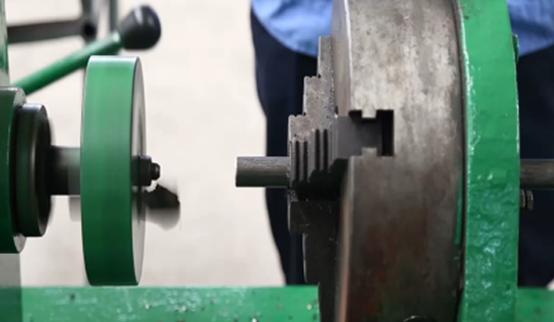 Afrikaans
Afrikaans  Albanian
Albanian  Amharic
Amharic  Arabic
Arabic  Armenian
Armenian  Azerbaijani
Azerbaijani  Basque
Basque  Belarusian
Belarusian  Bengali
Bengali  Bosnian
Bosnian  Bulgarian
Bulgarian  Catalan
Catalan  Cebuano
Cebuano  Corsican
Corsican  Croatian
Croatian  Czech
Czech  Danish
Danish  Dutch
Dutch  English
English  Esperanto
Esperanto  Estonian
Estonian  Finnish
Finnish  French
French  Frisian
Frisian  Galician
Galician  Georgian
Georgian  German
German  Greek
Greek  Gujarati
Gujarati  Haitian Creole
Haitian Creole  hausa
hausa  hawaiian
hawaiian  Hebrew
Hebrew  Hindi
Hindi  Miao
Miao  Hungarian
Hungarian  Icelandic
Icelandic  igbo
igbo  Indonesian
Indonesian  irish
irish  Italian
Italian  Japanese
Japanese  Javanese
Javanese  Kannada
Kannada  kazakh
kazakh  Khmer
Khmer  Rwandese
Rwandese  Korean
Korean  Kurdish
Kurdish  Kyrgyz
Kyrgyz  Lao
Lao  Latin
Latin  Latvian
Latvian  Lithuanian
Lithuanian  Luxembourgish
Luxembourgish  Macedonian
Macedonian  Malgashi
Malgashi  Malay
Malay  Malayalam
Malayalam  Maltese
Maltese  Maori
Maori  Marathi
Marathi  Mongolian
Mongolian  Myanmar
Myanmar  Nepali
Nepali  Norwegian
Norwegian  Norwegian
Norwegian  Occitan
Occitan  Pashto
Pashto  Persian
Persian  Polish
Polish  Portuguese
Portuguese  Punjabi
Punjabi  Romanian
Romanian  Russian
Russian  Samoan
Samoan  Scottish Gaelic
Scottish Gaelic  Serbian
Serbian  Sesotho
Sesotho  Shona
Shona  Sindhi
Sindhi  Sinhala
Sinhala  Slovak
Slovak  Slovenian
Slovenian  Somali
Somali  Spanish
Spanish  Sundanese
Sundanese  Swahili
Swahili  Swedish
Swedish  Tagalog
Tagalog  Tajik
Tajik  Tamil
Tamil  Tatar
Tatar  Telugu
Telugu  Thai
Thai  Turkish
Turkish  Turkmen
Turkmen  Ukrainian
Ukrainian  Urdu
Urdu  Uighur
Uighur  Uzbek
Uzbek  Vietnamese
Vietnamese  Welsh
Welsh  Bantu
Bantu  Yiddish
Yiddish  Yoruba
Yoruba  Zulu
Zulu Comprehensive Guide to Conveyor Idler Types
Understanding Conveyor Idler Types
Conveyor idlers are crucial components in bulk material handling systems, playing a vital role in supporting the conveyor belt and facilitating the movement of materials. Understanding the different types of conveyor idlers is essential for selecting the right one for specific applications, ensuring optimal operational efficiency and longevity.
1. Impact Idlers
Impact idlers are strategically placed at loading points to absorb and minimize the impact of materials being loaded onto the conveyor belt. They typically feature rubber or steel rolls that help cushion the load, reducing damage to the belt and increasing its lifespan. By dispersing the energy from heavy loads, impact idlers protect the conveyor system from excessive wear.
Carrying idlers support the weight of the load being transported and maintain the belt's alignment. These idlers are usually arranged in a V-shape, ensuring that the belt can properly carry materials along its length. Depending on the design, carrying idlers can be flat or tapered to accommodate different belt widths and materials. They are essential for maintaining the conveyor's overall stability.
3. Return Idlers
conveyor idler types

Return idlers are utilized on the underside of the conveyor belt, allowing it to return to the head after discharging its load. These idlers are typically horizontal and facilitate smooth belt return while reducing friction. Their design is crucial in ensuring that the belt operates efficiently and has a long operational life, thereby minimizing wear and tear.
4. Training Idlers
Training idlers, also known as tracking idlers, are designed to keep the conveyor belt centered during operation. Misalignment can lead to excessive belt wear and increased maintenance costs. Training idlers often come with adjustable side rollers to guide the belt back to its correct path, enhancing system reliability and reducing downtime.
5. Self-Cleaning Idlers
Self-cleaning idlers are equipped with features that prevent material buildup on the rollers. This type of idler is particularly beneficial in applications where sticky or wet materials are involved, as it helps maintain proper function and prevents material from clogging the system. By reducing residue accumulation, self-cleaning idlers enhance efficiency and reduce maintenance needs.
In conclusion, choosing the right type of conveyor idler is crucial for the efficient functioning of conveyor systems. Each type of idler serves a specific purpose, addressing various challenges in material handling. By understanding the roles and features of these idlers, operators can ensure that their conveyor systems run smoothly, with minimized maintenance and extended lifespan. Proper selection and maintenance of conveyor idlers ultimately lead to enhanced productivity and lower operational costs.
-
Revolutionizing Conveyor Reliability with Advanced Rubber Lagging PulleysNewsJul.22,2025
-
Powering Precision and Durability with Expert Manufacturers of Conveyor ComponentsNewsJul.22,2025
-
Optimizing Conveyor Systems with Advanced Conveyor AccessoriesNewsJul.22,2025
-
Maximize Conveyor Efficiency with Quality Conveyor Idler PulleysNewsJul.22,2025
-
Future-Proof Your Conveyor System with High-Performance Polyurethane RollerNewsJul.22,2025
-
Driving Efficiency Forward with Quality Idlers and RollersNewsJul.22,2025





























